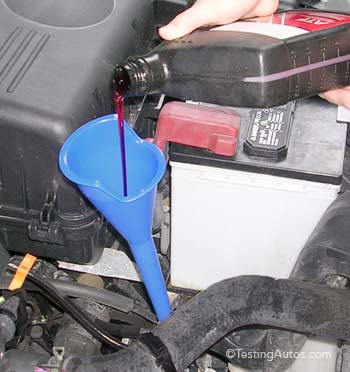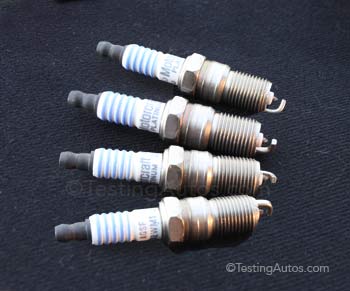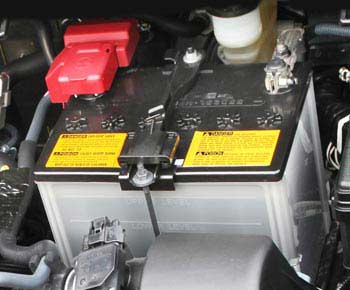When should the wheel alignment be done?
Updated: May 15, 2022
The wheel alignment should be done if you feel that your vehicle pulls to one side, or the steering wheel is off-center when driving straight, or your tires show uneven wear. It's also a good idea to have the alignment checked if you hit a curb or a large pothole. The wheel alignment must be done after replacing major steering or suspension parts.
If your vehicle holds the road well and shows no signs of incorrect wheel alignment, consider having the wheel alignment checked every 2-3 years as a preventative maintenance. There are no mileage or time requirements. Car makers typically don't include the wheel alignment in the vehicle's maintenance schedule, but advice to have it checked if you find that tires are wearing unevenly.
The wheel alignment is the process of checking and adjusting the angles of the wheels relative to each other and to the car body or frame. Over time, wheel angles change as a result of sagging of the springs and wearing of rubber bushings and other parts in the steering and suspension. As you drive over potholes and speed bumps, some parts of the suspension may slightly deform and this can also change the wheel angles. Checking the wheel alignment will show if the wheel angles are within specifications for your vehicle.
What are the benefits of the correct wheel alignment? Your tires as well as suspension and steering components will last longer and your vehicle will handle better. You might notice that after the wheel alignment, the car holds the road better and feels more stable. This will be even more noticeable if you have a sporty car with wider tires.
Symptoms of incorrect wheel alignment:
- The steering wheel is off-center when driving straight
- The vehicle pulls to one side
- The vehicle doesn't hold straight direction well and wanders from side to side
- When driving over bumps or uneven surfaces, the vehicle shifts sideways
- Tires make a screeching noise in turns
- Uneven tire wear
- Tire cupping
How is the wheel alignment done?
Before doing the wheel alignment, the mechanic should test drive the vehicle, adjust the tire pressure, as well as check the ride height and basic suspension and steering components such as springs, struts, ball joints and tie rod ends. if any of the steering or suspension components (e.g., tie rod ends, control arms) are bad it should be replaced before doing the wheel alignment.To perform the wheel alignment, the vehicle is placed on an alignment rack (in the photo above). Special devices called optical wheel targets (in the photo) are attached to each wheel.
The wheel alignment machine uses the optical wheel targets to measure the actual angles of the wheels (called toe, camber, caster, etc.). The actual angles are compared to the specifications for the vehicle. The alignment machine will show the actual angles and the specifications on a computer screen.
Based on the measurements, the mechanic will correct the wheel angles that are adjustable to set them within specifications. Not all angles can be adjusted. In many modern passenger cars, for example, the only angles that can be adjusted are the front and rear toe angles.
 The wheel alignment printout shows the wheel angles before and after the alignment. Angles that are marked red are out of specs.
The wheel alignment printout shows the wheel angles before and after the alignment. Angles that are marked red are out of specs.After the alignment is done, you will get a printout showing the wheel angles before and after the alignment. See the sample wheel alignment report.
The top portion shows the measurements taken before. As you can see, some angles are in the red, which means that they were out of specifications. The bottom portion shows all angles after the alignment. They are all green, which means they are within specifications.
The four-wheel alignment is always the best option, as the two-wheel alignment involves adjustment of only two front tires.
Is it necessary to check the wheel alignment once a year? No, if your vehicle shows no symptoms of incorrect alignment, it's not necessary. From our experience, if you re-check the wheel alignment in an average car after a year of normal driving, most of the time it will still be within specs. However, if you hit a large pothole, the alignment will likely be off. That said, many motorists do check the wheel alignment every year as a peace of mind measure.
Does the wheel alignment need to be done when installing new tires? Your shop may recommend it as a way to make your new tires last longer, but it's not necessary.
How much does it cost to do the wheel alignment? The prices vary between $90 and $180 depending on the vehicle. Your shop may charge you more if some of the adjustments are badly rusted or seized. For better results, look for a repair shop that has a newer, more advanced wheel alignment rack. On average, the wheel alignment takes from 40 minutes to an hour.
Read Next:
When Should Tires be Replaced in a Car?
When do coil springs need replacing in a car?
When does the tie rod end need to be replaced?
When should struts and shock absorbers be replaced?
When do the control arms need to be replaced?
How often do brakes need to be serviced?
How To Save Money on Car Repairs - Mechanic's Tips
When Should Tires be Replaced in a Car?
When do coil springs need replacing in a car?
When does the tie rod end need to be replaced?
When should struts and shock absorbers be replaced?
When do the control arms need to be replaced?
How often do brakes need to be serviced?
How To Save Money on Car Repairs - Mechanic's Tips







